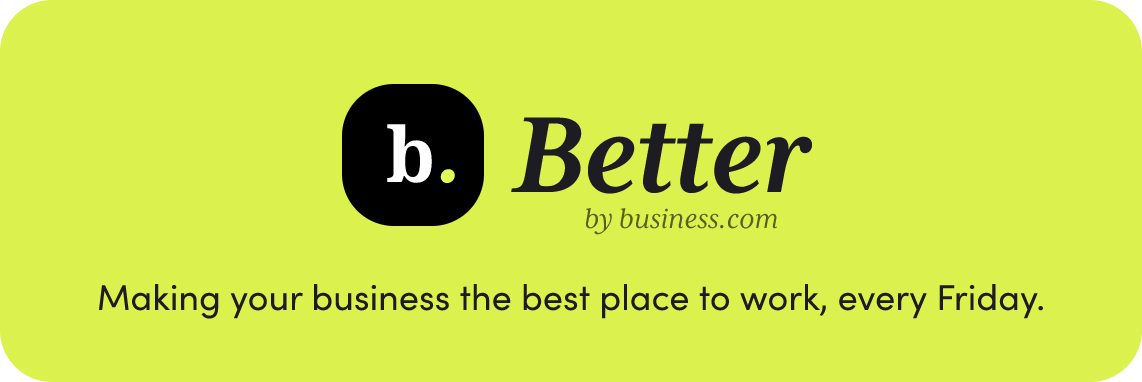Even after returning to the office, much of your workday is probably spent on Zoom. If it feels like those nonstop video meetings (and untold hours of looking at your own face) are slowly killing you, it might be ’cause they are.
A new study in the journal Scientific Reports compared the brain and cardiac activity of videoconference participants to those of in-person attendees. EEG and ECG devices showed that the remote group had higher levels of neural fatigue along with “notable changes” in heart rate.
While the researchers admit that videoconferencing isn’t going away, they caution organizations to use it sparingly and consider the “cognitive costs” and “stress potential” on “human well-being and health.” In other words, it’s a great topic for your next corporate wellness webinar!
|
|
|
To Prevent Brain Drain, Let Employees Take Mental Health Days
|
In the most recent season of FX’s comedy series It’s Always Sunny in Philadelphia, Dennis Reynolds (Glenn Howerton) leaves work at Paddy’s Pub for a mental health day. His sister Dee (Kaitlin Olson) describes Dennis’ time off to their dismayed father Frank (Danny DeVito) as “like a sick day, but for your brain — and if somebody calls it, you have to give it to ‘em, you can’t ask any questions.”
To Frank, the concept of a mental health day is absurd — which reflects a real-world generational divide on the topic — but there’s evidence for encouraging your team to call out if necessary.
Harvard Business Review found that nearly 8 in 10 workers who’d taken a mental health day felt it benefited their job performance. According to the Mayo Clinic, mental health days can reduce burnout and absenteeism; boost morale, resiliency, and productivity; and may prevent a serious crisis, even if a single day off work can’t fix a chronic condition like depression.
Although skeptics may consider a mental health day to be like Ferris Bueller’s Day Off, the time may be needed to see a therapist, adjust to new medications, or cope with major life stressors. In fact, SHRM Research found that 58% of U.S. workers ranked mental health days as the single best way to help their emotional well-being; only 35% said the same for actual mental health coverage in their benefit plans (which is also important to provide).
As of 2022, only 9% of companies allow mental health days, but 30% are planning to do so, even if it’s simply reclassifying sick days as “wellness days” or otherwise incorporating them into existing PTO structures. An incredible 82% of Generation Z want their employers to offer this benefit.
It could even benefit recruiting, as 81% of workers say they’ll choose their next job, based in part, on potential employers’ mental health policies, according to the American Psychological Association. Granting this day off could lead to many more days “on.”
|
|
|
Remote Work Is Out Of Fashion, But Remote Workers Still Need Your Support
|
|
|
Dr. Steven Rogelberg is a chancellor’s professor at UNC Charlotte, former president of the Society for Industrial and Organizational Psychology, and author of Glad We Met: The Art and Science of 1:1 Meetings.
This was the year of return-to-office, and new job opportunities reflected the trend: LinkedIn, Indeed, and ZipRecruiter all saw fewer remote listings. Employers want their folks to come in — 9 in 10 companies will have an RTO mandate by the end of 2024 — but there’s just one problem: Many workers hired during the pandemic live thousands of miles away.
Thus, the need to effectively manage remote workers still exists, even if you’re not hiring new ones.
A recent article in the journal Organizational Dynamics shared recommendations to improve the productivity and well-being of remote workers based on survey results from hundreds of them. The recommendations are thoughtful, well-grounded, and provide a nice guide for managers:
- Focus on accomplishments rather than work hours. Attempting to exert excessive control and heavy monitoring is typically counterproductive (unless warranted given poor performance).
- Support cultivating a network of coworker relationships. This could include assigning a mentor or setting up video conferencing devices in office meeting rooms. Have a plan; don’t just leave it to luck.
- Aid in establishing boundaries. Remote employees can lose track of where their work life ends and their home life begins. Provide resources for setting up a proper home office with separate communication devices for work and personal use.
- Facilitate the development of core self-evaluation (CSE). This encompasses locus of control, emotional stability, self-esteem, and self-efficacy. Leaders can provide feedback and assign tasks to enhance these qualities. Training, webinars, or counseling services can further contribute to CSE development.
- Clearly communicate the organization’s higher purpose. Managers and leaders should ensure that the company mission is well-understood even by employees not physically present, fostering a sense of purpose.
- Offer wellness screenings and support for health issues. This helps maintain employee well-being wherever they happen to live.
- Encourage engagement. Working at home can be lonely, so recommend volunteer activities, mindfulness exercises, or relevant self-help books.
- Acknowledge and appreciate their efforts. Despite not being physically present, remote employees play a crucial role in keeping the business operational. Provide ongoing support to maintain a positive and connected environment.
|
|
|
The Grinch Shows Opportunity Costs of Loneliness
|
(Source: Universal Pictures)
|
For many people, the holidays are a time to celebrate with family, friends, and lots of eggnog. But for others, the season can be particularly isolating, which brings us to Dr. Seuss’ How the Grinch Stole Christmas.
In Ron Howard’s 2000 live-action adaptation, our green antihero (Jim Carrey) endures so much schoolyard bullying that he ditches Whoville for a life of solitude and disgruntlement on Mount Crumpit. This provides a new sympathetic backstory, but the classic book’s message remains: Without a sense of community, it’s difficult to be our best selves.
While it’s a lighthearted tale, that message is deeply important now. Over half of young employees feel “lonely all or most of the time” at work, according to a 2023 Glassdoor survey. Research from Cigna places that figure closer to 8 in 10, estimating the cost to employers at $154 billion annually due to job withdrawal, poor sleep, health issues, and stress-related absenteeism. The U.S. Surgeon General has even called loneliness a national epidemic.
So, let’s all follow the lead of Cindy Lou Who (Taylor Momsen) in showing compassion. Send an office-wide reminder about your company’s mental health resources; discreetly and tactfully check in on colleagues who appear to have the winter blues; and help the wallflowers at your office holiday party feel included. Your heart might even grow a few sizes.
|
|
|
Written by Shannon Simcox and Ali Saleh. Comic by John McNamee.
|
|
|
|








_2.jpg)